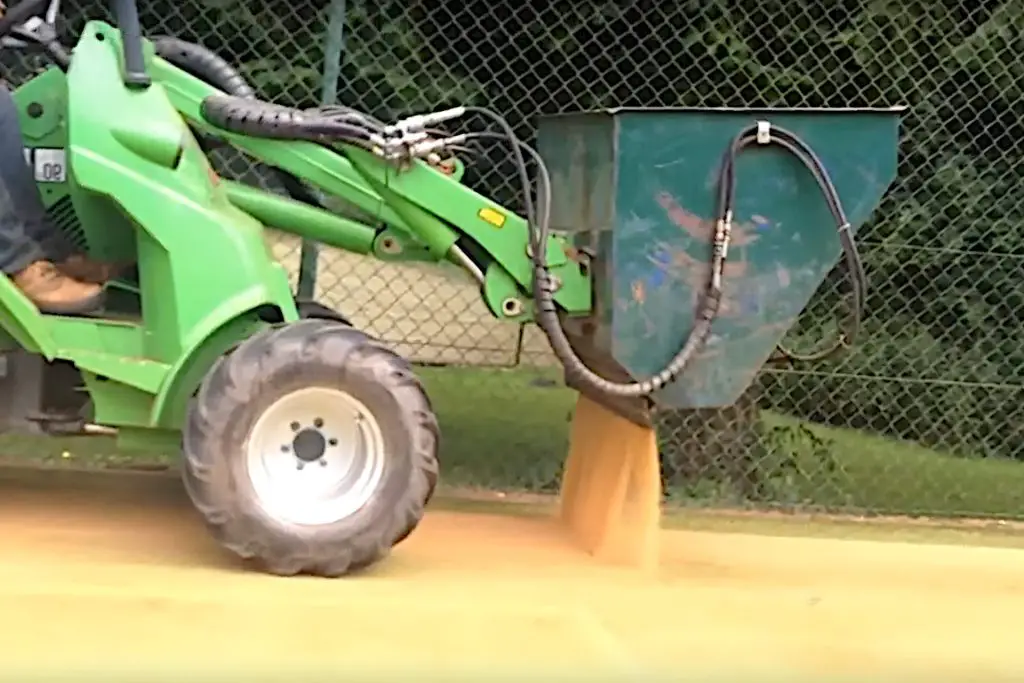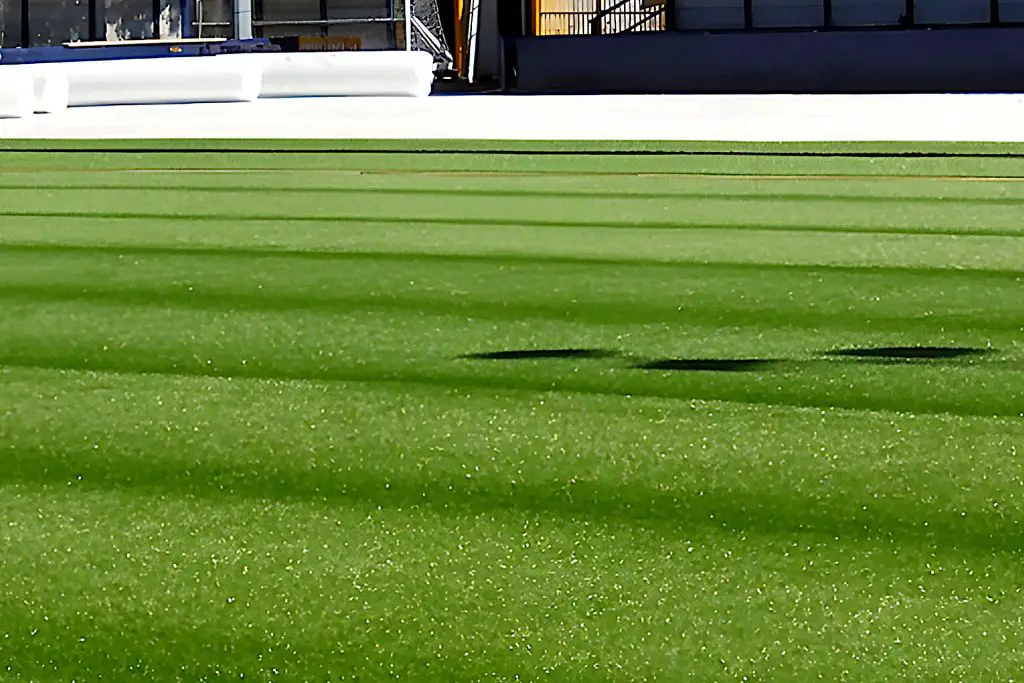Infill for Artificial Turf: Ensuring You Use the Right Infill for Your Synthetic Grass
One of the properties of real grass is that its blades have a natural way of re-establishing themselves in an upright position through the innate growth process when walked on.
This, though, is obviously not true of artificial grass as there is no growth process. Synthetic grass blades, in contrast, require some means to stay or return to their initial upright posture when pressure is applied in order for the artificial turf to appear natural.
To a large extent, this is a structural function, and it is a function that is carried out by the use of infill. The purpose of the infill is to ensure that the artificial grass retains its attractive appearance for the longest amount of time feasible.
What Is Infill For Artificial Grass

When installing artificial turf, it’s important to understand how the infill works. The infill is the material that goes between the blades of the synthetic grass. It may seem or look innocuous but it serves a vital function in the appearance, performance, and maintenance of artificial turf.
Appearance and Performance
Its main job is to keep the blades upright, giving it a better appearance and preventing the tufts of blades from becoming matted, which can damage the synthetic grass.
In addition, infill makes the turfed area feel springy so that jogging or walking across the artificial turf feels similar to that of jogging or walking across genuine grass. This is because the infill simulates the shock-absorbing properties of the soil substrata upon which real turf grass is normally laid.
If you didn’t use infill, the synthetic grass would have a much less uniform appearance, with the blades collapsing when walked or played on. The artificial turf would also be more susceptible to deterioration that is induced by an excessive amount of ultraviolet light from the sun.
Infill also provides ballast to weigh down the thatch bedding into which the synthetic grass tufts are sewn. This is important because changes in temperature can cause artificial turf to expand and contract. The weight provided by the infill helps stop pushing the bedding from wrinkling or riding up in places.
When artificial grass is laid on top of a base that is non-permeable, like concrete surfaces, the use of infill can be critical to providing additional weight, as options for attaching the thatch bedding base are often limited to special adhesives or industrial tape.
Maintenance Functions of Artificial Grass Infill
Infill performs more functions than just the obvious ones relating to aesthetics and performance. It also helps provide the artificial turf with properties that allow it to function and perform as closely as possible to a real grass surface.
In this respect, infill helps as it provides drainage, dissipating water to prevent standing water pooling on the surface of the turf.
Finally, infill acts as a protective layer where the tufts of synthetic grass are sewn into the This ultimately helps the artificial turf wear better, and consequently be longer-lasting.
Infill Allows for Indoor Use
One of the advantages of artificial turf over genuine grass is its ability to function like lifelike grass indoors. However, for indoor use, there are various safety certifications that are required, the most important of which is a fire rating certificate.
In general, artificial turf is rated as Class two, which is acceptable for outdoor use but wouldn’t qualify for indoor applications. But applying the right type of infill, such as sand or silica infill, the fire rating can be changed to Class 1, making it suitable for indoor use.
Quantity of Infill Required

There are three aspects to the quantity of infill that you will require, the type and quality of the synthetic grass you have, the kind of infill that you are using, and the anticipated amount and type of use that the surface will get.
Quantity in Terms of Type and Quality of the Artificial Turf:
The type and quality of synthetic grass depend on its density, which will have a direct impact on the quantity of infill that is going to be required. The density, itself, depends on a number of factors:
- The ‘face rate’, sometimes called stitch rate, is calculated by the weight of the quantity of fiber, including thatch and synthetic blades, in one square yard of lawn,
- the gauge, which is the distance between each row of synthetic grass tufts sewn in,
- the DTEX, which is the fiber mass in grams per 1000 meters,
- and the height of the pile.
When estimating the infill required you need to take these factors into account. The truth is that infill is less expensive than synthetic grass fibers so reducing the density reduces the cost. A less dense artificial turf is going to have less fiber and thatch, thus, more infill is going to be required.
Quantity in Terms of Traffic and Use:
The second aspect in terms of quantity will be the way that the artificial turf will be used. When considering this the key questions that need to be addressed are how much foot traffic do you anticipate the grass receiving and to what extent will it be utilized?
As a rule of thumb, the amount of infill that is required will increase proportionately with both the volume of traffic and the intensity of the usage. In terms of residential installations, because the majority of these applications such as front or rear yards can be classified as having little traffic, ordinarily around a pound per square foot of infill should suffice, subject to the quality of the artificial turf.
When it comes to commercial applications, which are likely to have considerably more traffic a much greater amount of infill is usually required. It can be between two to five pounds per square foot and occasionally even more. Each application is different and will depend largely on the type of anticipated traffic, although the actual quantity is reduced somewhat with denser artificial turfs.
Artificial Turf Infill Options

The primary use case is also often one of the main determining factors as to the type of infill that should be used. There are numerous different options available when choosing infill. These include natural materials such as silica, organic materials such as wood chips, and rubber pellets like crumb rubber, with many designed for specific use cases such at soccer or putting greens.
Silica
One of the most common forms of infill used is silica sand. Silica comes from quartz that has broken down and been eroded into granules. It has multiple use cases across a wide cross-section of industries one of which is as an infill for artificial turf.
Silica comes in different grades. These grades are based on the size of the silica granules and relate to the hole size of the grading sieve.
Infill has to settle evenly on the artificial turf’s base to be effective. Different silica sizes are used, based on the density of the synthetic grass on your base. The wider the turf’s gauge and the lower its face rate, the larger the grade of infill that will be required in order for the infill to sit correctly.
Silica can come in various forms from, raw sand to specially treated silica, and colored products.
Raw Sand
Raw sand, whilst probably the cheapest available infill, has its drawbacks. It isn’t rounded which can lead to fiber damage, it can easily accommodate bacteria, it can clump and harden, and degrades more quickly than other infills.
Silica, Colored and Treated With Microban
Silica that is rounded and treated is a different proposition as almost all of these drawbacks are eliminated. Most of these better silica infill products are dyed and coated with Microban.
The Microban coating is a special protective acrylic coat, which protects against the germs and microorganisms that may produce foul odors, stains, and other issues that can impact on the structural integrity of the artificial turf. The Microban coating aids the durability of your surface and makes it a more pleasant environment to use.
Zeolite
Zeolite is a type of volcanic stone that has the ability to absorb moisture and is suitable for use around children and animals. Pet owners often use zeolite as the filler material for their artificial grass installations because of its deodorizing properties.
Zeolite works in a similar way to cat litter. Ammonia in pet urine is captured and prevented from converting into nitrogen gas, eliminating the worst of smells.
Zeolite is a completely natural substance. It differs from other infills in terms of its molecular makeup in that it has a honeycombed structure with negatively charged ions. This actively draws in pet urine but prevents it from releasing as ammonia, deodorizing the atmosphere. These gases are then washed away through watering or rain as nitrogen is easily dissipated by water.
Crumb Rubber
Crumb rubber is a popular choice for infill material for artificial turf. It is made from recycled tires, and it is soft and bouncy and nonabrasive, and because of these properties is often used for sports fields
Crumb rubber infill is often combined with sand, pea gravel, or crushed stone and is relatively cheap compared to other types of infill which makes it somewhat popular. However, there are a considerable number of issues associated with it, not least the fact at the numerous different compounds that the final crumb rubber product contains can pose health issues with regard to bacteria and heat.
Over time the rubber begins to disintegrate which produces black dust that can be easily transferred to shoes, sneakers, and clothing during use.
Rubber tends to absorb smells and sunlight, which often causes the area where the infill is used to become odorous and make the area hotter than the surrounding space. Unlike infills coated with Microban or zeolite, crumb rubber does not have the ability to destroy germs and bacteria, allowing them to accumulate over time, which requires proper disposal at the end of its life.
Virgin Polymer
Virgin polymers are very similar to crumb rubber but without the drawbacks. EPDM and TPE are the two principal varieties used for artificial turf infill, which are designed to be used exclusively for sports playing fields.
The fact that it is produced from new rather than recycled material is a primary benefit as it is manufactured from specified components, that can be combined to improve its performance while eliminating more harmful chemicals.
It retains the advantages of crumb rubber in that it is nonabrasive, soft, and provides a level of spring that makes it ideal for the sports fields it is designed for. However, it is considerably more expensive than crumb rubber which often limits it to professional use.
Wrapping Up: Infill for Artificial Turf
Infill for artificial turf plays a crucial role in the stability, shape, and uniformity of your synthetic grass. Without infill, the illusion that artificial turf acts and feels the same as real grass disappears. The synthetic tufts of grass wouldn’t be able to memorize their upright position, the sensation when walking on it, wouldn’t seem right, and the stands of fiber would quickly become matted and easily destroyed.
There is a wide range of choices when it comes to the infill that you can use. However, it is important to use an infill that takes into account the quality and type of artificial turf installed and its use cases.
